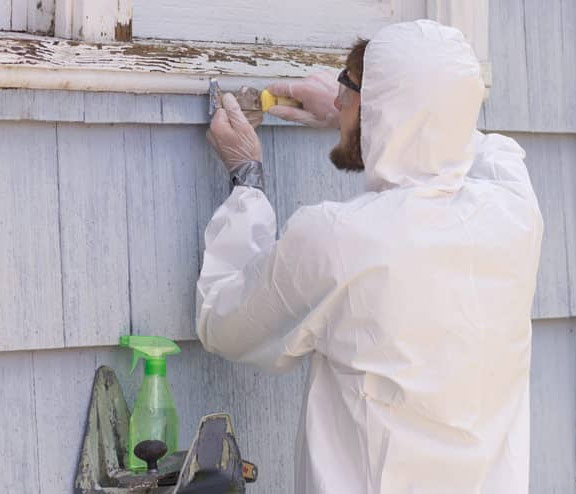Step-by-Step Process for Successful Lead Infraction Removal
Attending to lead offenses demands a thorough and organized method to guarantee both safety and security and regulative conformity. The trip begins with the exact discovery and assessment of contamination sources, making use of cutting-edge analysis devices. Following this, adherence to government and state laws is extremely important to developing a reliable remediation strategy. Such a plan should information the certain approaches and timelines for activity. The real removal requires experienced personnel to apply these strategies while strictly adhering to security procedures. Yet what happens after the removal is finished? The response lies in comprehending the important post-remediation approaches that ensure lasting safety and security and area well-being.

Detection and Analysis
Discovery and evaluation are crucial steps in the remediation of lead violations. To guarantee a reliable remediation process, it is vital to conduct an extensive assessment of the environment where potential lead exposure exists.
As soon as discovery is achieved, an extensive evaluation has to be taken on. This consists of assessing the level and severity of contamination, in addition to recognizing populaces at threat, particularly children and pregnant ladies. Danger evaluations usually entail tasting and lab evaluation, ecological studies, and health impact research studies. The gathered information ought to be meticulously documented to sustain the advancement of a reliable removal method (Lead Violation Removal in NYC).
Furthermore, it is necessary to focus on areas with the highest degree of contamination and those that position the best health risks. Efficient communication with stakeholders, consisting of building owners, citizens, and public health and wellness authorities, is crucial for making certain that all parties are informed about the findings and the subsequent actions required for remediation. This preliminary detection and assessment stage prepares for an effective lead infraction removal process.

Lawful and Governing Compliance
Browsing the landscape of lawful and regulatory conformity is a critical facet of effective lead infraction removal. Conformity makes certain not only the safety of damaged populaces yet also the trustworthiness and lawful standing of the organization responsible for removal.
State and regional policies can differ, often imposing extra responsibilities or more rigid standards. As a result, a detailed understanding of all relevant legal structures is critical. This involves precise paperwork of all remediation tasks to show conformity. Failure to abide by these laws can lead to serious charges, consisting of hefty fines, lawsuit, and reputational damages.
Engaging lawful experts specialized in ecological law can promote browsing these intricacies. Normal training and accreditation for all workers entailed in the remediation process are additionally required to guarantee adherence to safety and regulatory requirements. By prioritizing lawful and regulatory conformity, companies can properly alleviate dangers and achieve an effective removal outcome.
Preparation the Removal
Efficiently preparing the remediation of lead offenses starts with a complete assessment of the polluted website. This preliminary evaluation ought to include a detailed site investigation to recognize the degree and focus of lead contamination. Comprehensive sampling and research laboratory analysis are critical to develop an accurate contamination account. This data-driven approach makes sure that removal efforts are properly targeted and reliable.
When the contamination is mapped, a danger analysis need to be carried out to assess potential health threats to people and the setting. Lead Violation Removal in NYC. This assessment must consider aspects such as direct exposure paths, populace susceptability, and ecological impacts. The insights gathered will form the basis for selecting a suitable remediation method
Consequently, establishing clear, possible goals for the removal project is essential. These goals ought to line up with regulative requirements and stakeholder expectations to guarantee compliance and neighborhood acceptance. Developing a detailed remediation strategy that lays out Recommended Reading approaches, timelines, and source allowance will help with a structured approach to the cleaning procedure.
Additionally, it is necessary to involve with stakeholders early and preserve transparent interaction throughout the preparation phase. This includes educating neighborhood neighborhoods, obtaining necessary authorizations, and collaborating with regulative agencies to guarantee all legal and procedural needs are fulfilled. A well-crafted remediation plan not just deals with the contamination efficiently but additionally develops trust and participation among all events included.
Performing the Removal
With a well-structured remediation strategy in location, the focus moves to the actual implementation of the remediation tasks. This phase includes mobilizing the needed resources, consisting of proficient personnel, customized equipment, and high-grade materials. Begin by plainly delineating duties and duties to make sure accountability and seamless sychronisation amongst staff member.
This consists of establishing up control locations to prevent lead dust and debris from spreading, as well as utilizing air purification systems to keep air top quality. Utilize methods such as official site wet scuffing, chemical stripping, or encapsulation, depending on the extent and location of the contamination.
Throughout the remediation process, conduct periodic evaluations and air high quality keeping an eye on to make sure conformity with governing standards. Efficient interaction with stakeholders, including residential or commercial property owners and residents, is vital to maintain them notified of development and any type of unforeseen developments. By carefully following these steps, the removal tasks can be carried out effectively and efficiently, ultimately mitigating lead hazards.
Post-Remediation Strategies
Post-remediation approaches play an essential duty in making sure the long-lasting success of lead violation removal initiatives. These techniques encompass recurring read what he said tracking, maintenance, and area education and learning to stop future lead exposure and make certain a risk-free environment.
First, routine surveillance is important. This includes regular testing of the previously influenced locations to ensure that lead levels remain within secure limitations. Building owners need to establish a schedule for these tests, preferably in partnership with qualified ecological professionals.

Third, informing the community plays a crucial role in maintaining the benefits of removal. Locals and residential or commercial property supervisors ought to be educated regarding the threats of lead exposure and the very best methods for keeping a lead-safe environment. Workshops, informative handouts, and community conferences can be reliable tools for sharing this information.
Final Thought
Effective lead infraction removal needs a detailed, methodical strategy incorporating detection and assessment of contamination, adherence to legal and regulatory standards, precise planning, and effective execution of remediation efforts. This systematic procedure emphasizes the relevance of thoroughness and vigilance in dealing with and mitigating lead contamination.